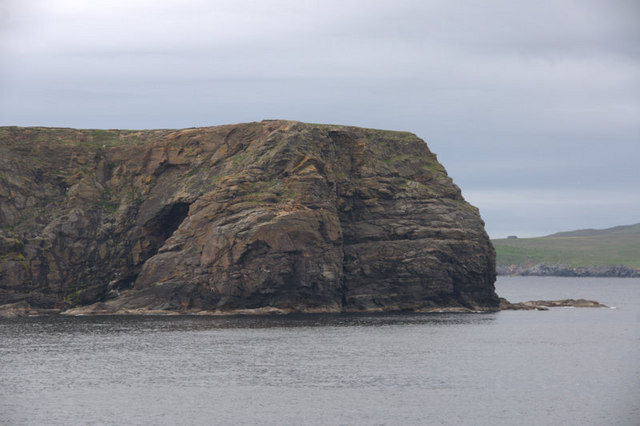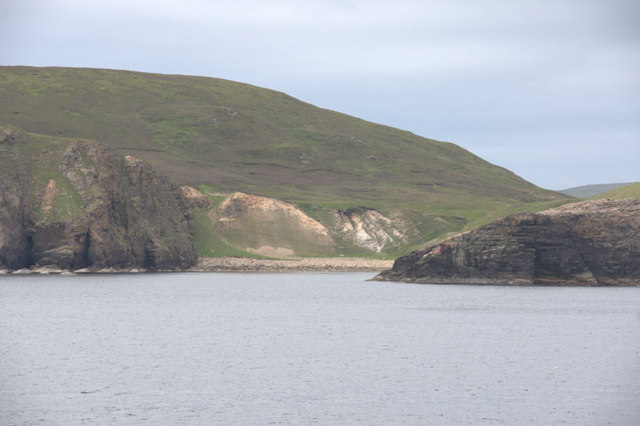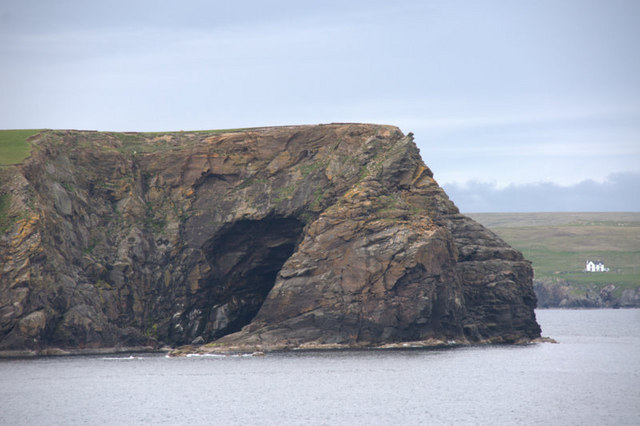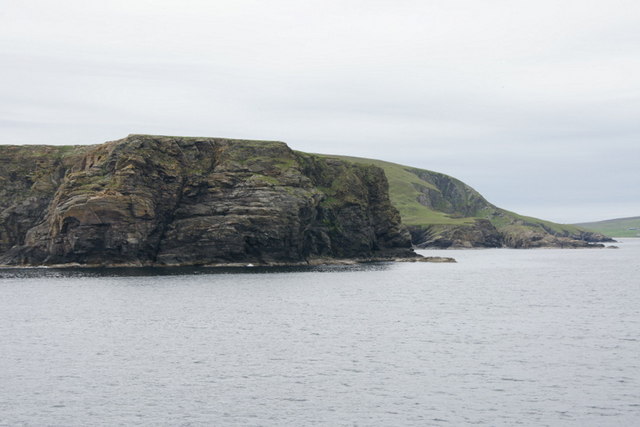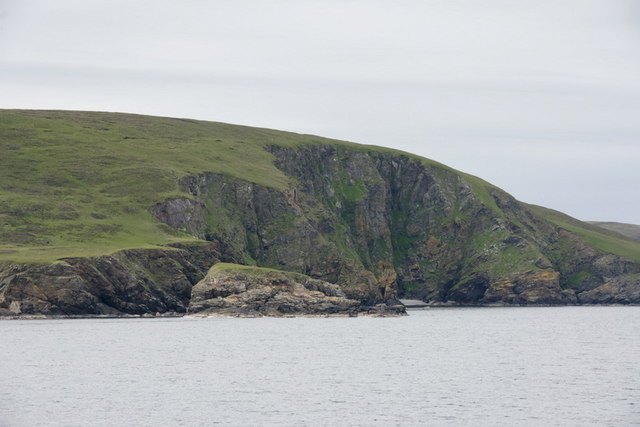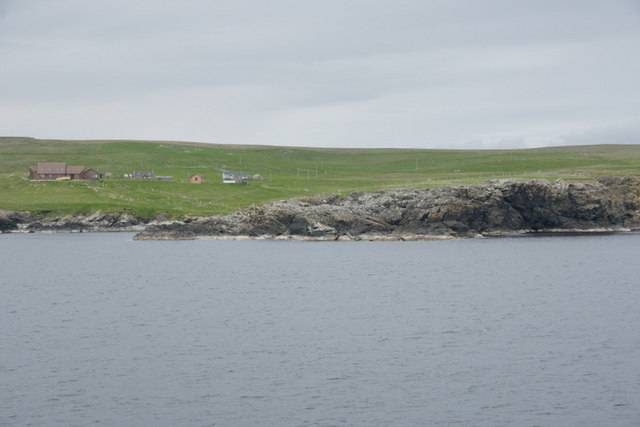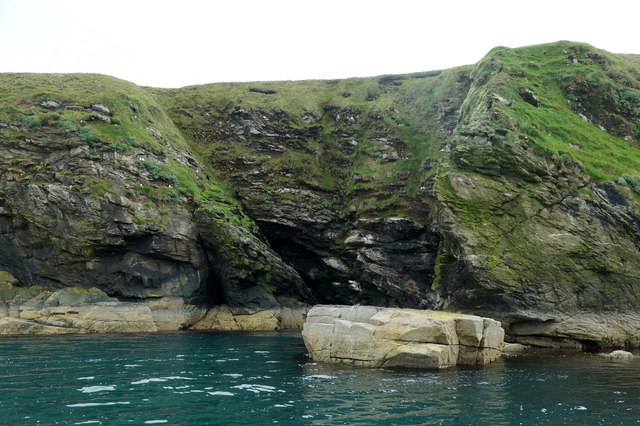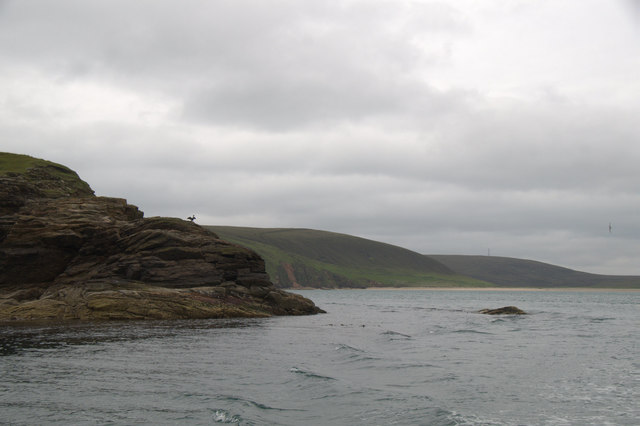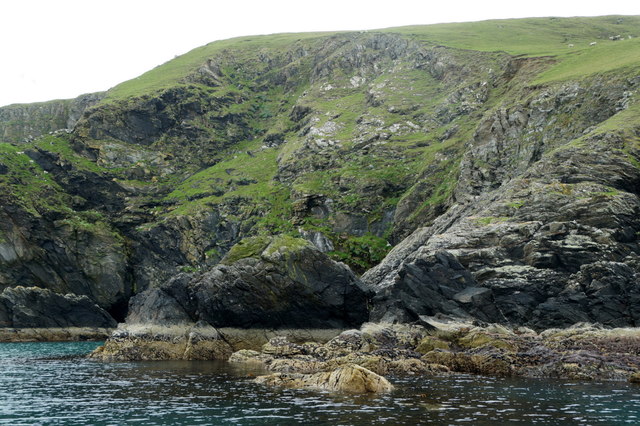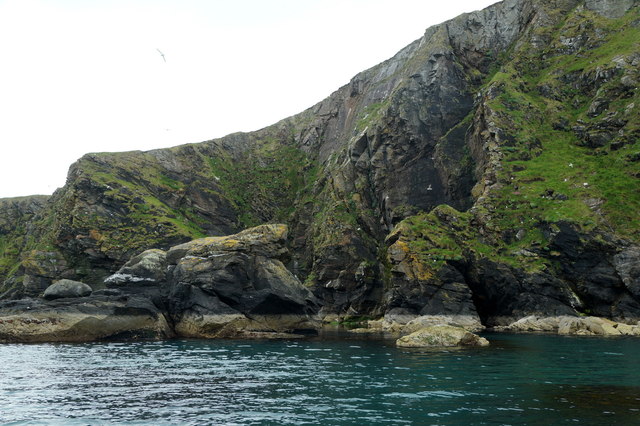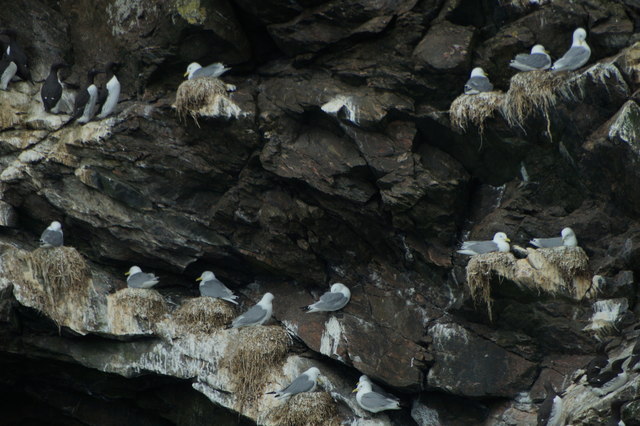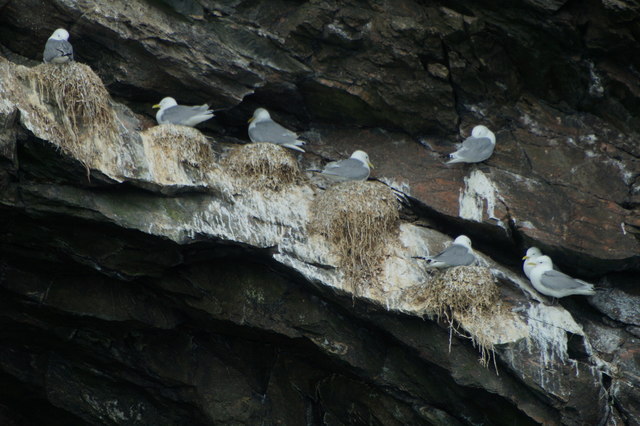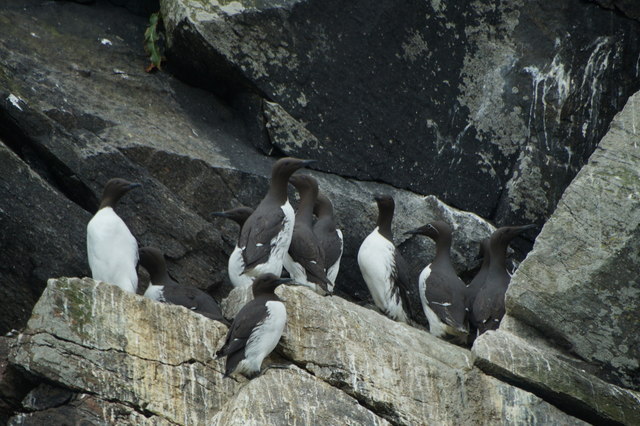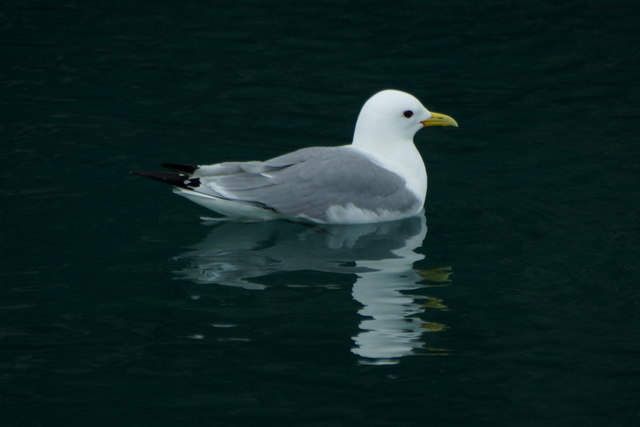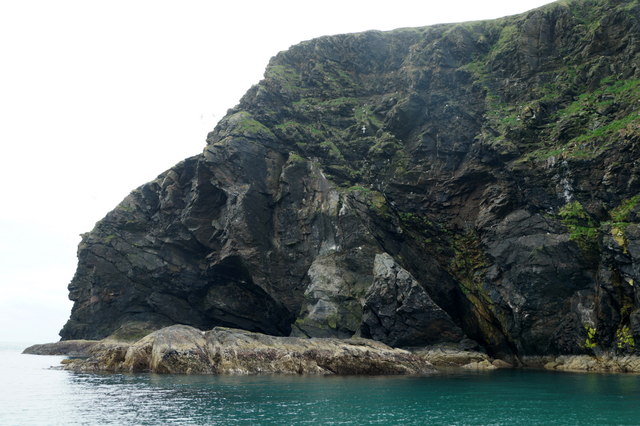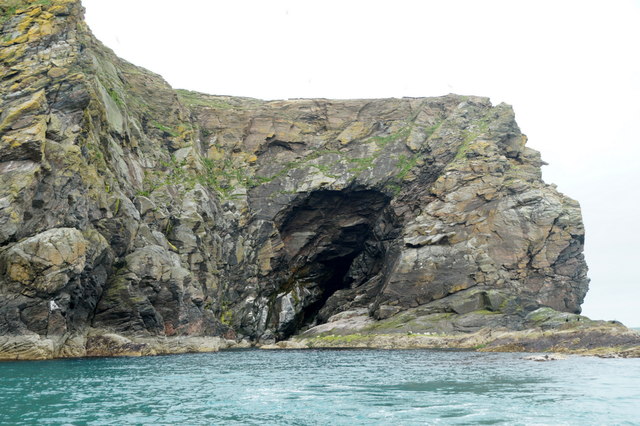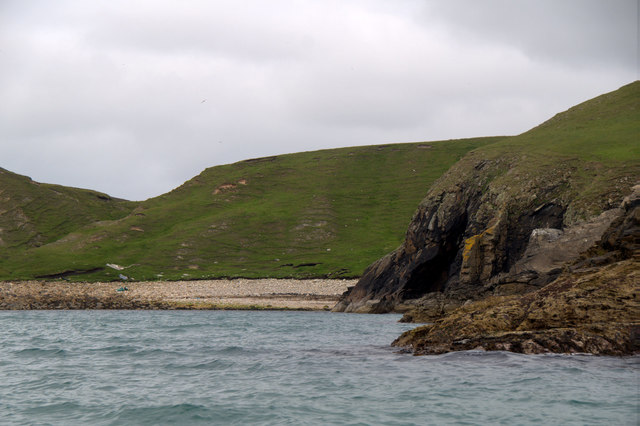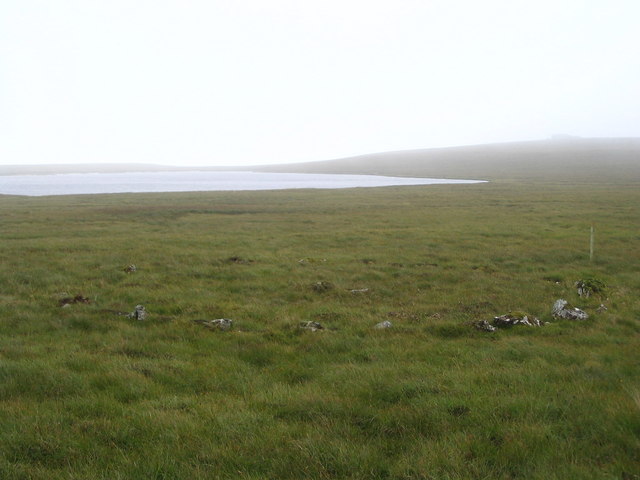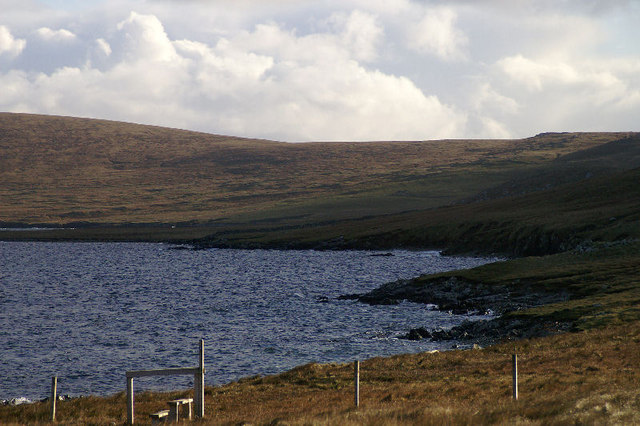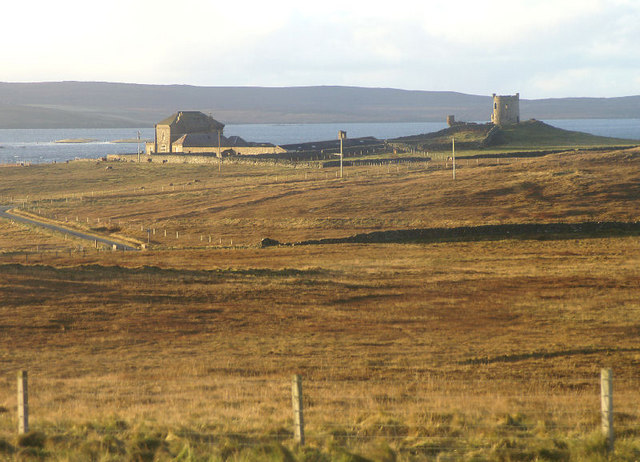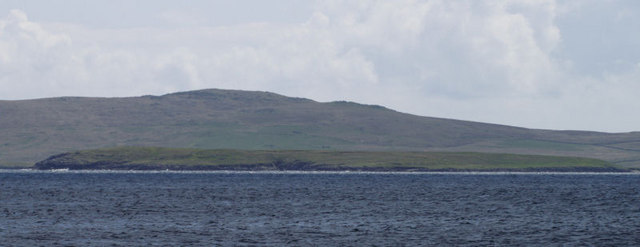Rousker
Coastal Feature, Headland, Point in Shetland
Scotland
Rousker
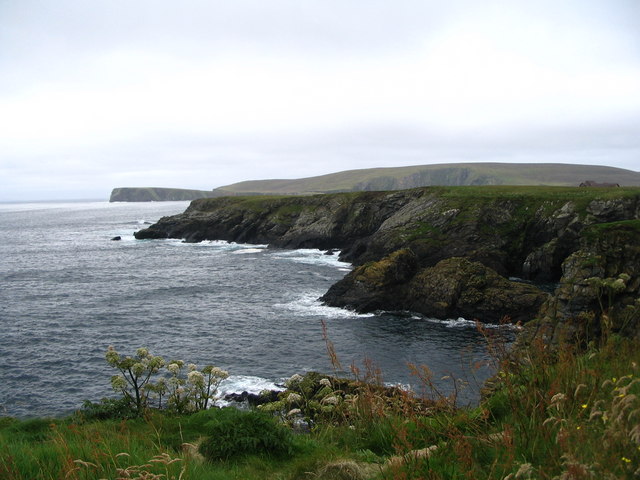
Rousker is a prominent coastal feature located in Shetland, an archipelago in the northernmost part of Scotland. It is classified as a headland, which is a narrow piece of land that extends out into the sea. Rousker is situated on the western coast of the Shetland Mainland, near the town of Aith.
This headland is characterized by its rugged and dramatic cliffs, which rise steeply from the sea. The cliffs are composed of sedimentary rocks, displaying various layers of sandstone and shale. The height of Rousker cliffs reaches up to 100 meters in some places, offering stunning panoramic views of the surrounding area.
The point at which Rousker juts out into the sea is known for its strong tidal currents and unpredictable weather conditions. The combination of these factors makes Rousker a popular spot for birdwatching and wildlife enthusiasts. The cliffs provide nesting sites for a diverse range of seabirds, including puffins, guillemots, and fulmars. Visitors can observe these magnificent creatures in their natural habitat and marvel at their graceful flight patterns.
In addition to its natural beauty, Rousker also holds historical significance. The headland was once home to an Iron Age fort, which is now in ruins. This ancient structure provides insights into the region's rich cultural heritage and is of interest to archaeologists and history buffs.
Overall, Rousker is a captivating coastal feature in Shetland, offering a combination of breathtaking landscapes, diverse wildlife, and historical remnants. Whether one is interested in nature, birdwatching, or history, Rousker is a must-visit destination in Shetland.
If you have any feedback on the listing, please let us know in the comments section below.
Rousker Images
Images are sourced within 2km of 60.582694/-0.88128496 or Grid Reference HU6189. Thanks to Geograph Open Source API. All images are credited.
Rousker is located at Grid Ref: HU6189 (Lat: 60.582694, Lng: -0.88128496)
Unitary Authority: Shetland Islands
Police Authority: Highlands and Islands
What 3 Words
///shadowing.hydration.bloodshot. Near Houbie, Shetland Islands
Nearby Locations
Related Wikis
Fetlar
Fetlar (Scots: Fetlar) is one of the North Isles of Shetland, Scotland, with a usually resident population of 61 at the time of the 2011 census. Its main...
Haltadans
Haltadans, also known as Fairy Ring or Haltadans stone circle, is a stone circle on the island of Fetlar in Shetland, Scotland. This site is a ring of...
Funzie Girt
Funzie Girt (; Scots: Funyie Girt "Finns' dyke") is an ancient dividing wall that was erected from north to south across the island of Fetlar in Shetland...
Brough Lodge
Brough Lodge is a 19th-century Gothic mansion on Fetlar, one of the Shetland Islands, in northern Scotland. Built by the Nicolson family, who were responsible...
Urie Lingey
For other islands with similar names, see Linga (disambiguation) Urie Lingey is one of the Shetland Islands. It is between Fetlar and Unst, and Yell is...
Hamars Ness
Hamars Ness is a headland on the island of Fetlar in Shetland, Scotland. The name is from the Old Norse Hamarsnes meaning "craggy headland". A ro-ro ferry...
Hascosay
Hascosay (Scots: Hascosay; Old Norse "Hafskotsey") is a small island lying between Yell and Fetlar in the Shetland Islands, Scotland. == Geography and... ==
Sound Gruney
For other islands with similar names, see Gruney (disambiguation) Sound Gruney is one of the Shetland islands. It lies about 1.5 kilometres (0.93 mi)...
Have you been to Rousker?
Leave your review of Rousker below (or comments, questions and feedback).
